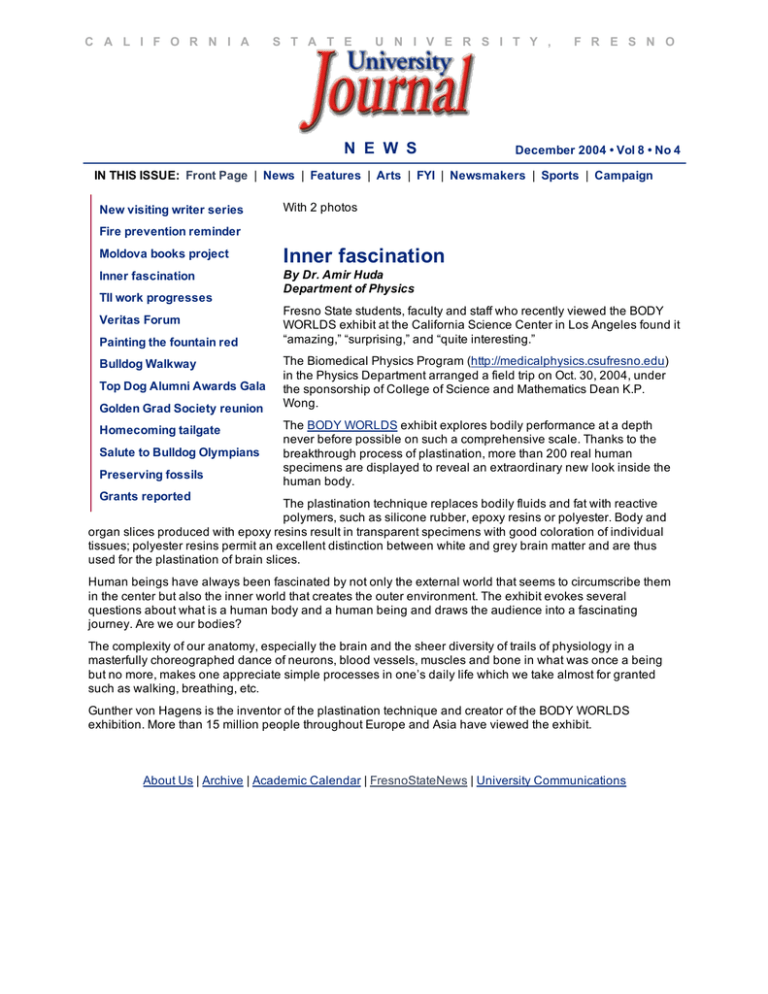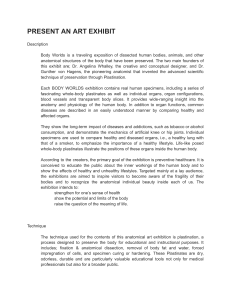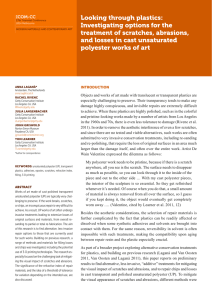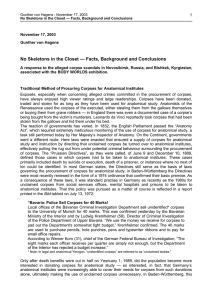N E W S
advertisement

C A L I F O R N I A S T A T E U N I V E R S I T Y , F R E S N O N E W S December 2004 • Vol 8 • No 4 IN THIS ISSUE: Front Page | News | Features | Arts | FYI | Newsmakers | Sports | Campaign New visiting writer series With 2 photos Fire prevention reminder Moldova books project Inner fascination Inner fascination By Dr. Amir Huda Department of Physics TII work progresses Veritas Forum Painting the fountain red Bulldog Walkway Top Dog Alumni Awards Gala Golden Grad Society reunion Homecoming tailgate Salute to Bulldog Olympians Preserving fossils Fresno State students, faculty and staff who recently viewed the BODY WORLDS exhibit at the California Science Center in Los Angeles found it “amazing,” “surprising,” and “quite interesting.” The Biomedical Physics Program (http://medicalphysics.csufresno.edu) in the Physics Department arranged a field trip on Oct. 30, 2004, under the sponsorship of College of Science and Mathematics Dean K.P. Wong. The BODY WORLDS exhibit explores bodily performance at a depth never before possible on such a comprehensive scale. Thanks to the breakthrough process of plastination, more than 200 real human specimens are displayed to reveal an extraordinary new look inside the human body. Grants reported The plastination technique replaces bodily fluids and fat with reactive polymers, such as silicone rubber, epoxy resins or polyester. Body and organ slices produced with epoxy resins result in transparent specimens with good coloration of individual tissues;; polyester resins permit an excellent distinction between white and grey brain matter and are thus used for the plastination of brain slices. Human beings have always been fascinated by not only the external world that seems to circumscribe them in the center but also the inner world that creates the outer environment. The exhibit evokes several questions about what is a human body and a human being and draws the audience into a fascinating journey. Are we our bodies? The complexity of our anatomy, especially the brain and the sheer diversity of trails of physiology in a masterfully choreographed dance of neurons, blood vessels, muscles and bone in what was once a being but no more, makes one appreciate simple processes in one’s daily life which we take almost for granted such as walking, breathing, etc. Gunther von Hagens is the inventor of the plastination technique and creator of the BODY WORLDS exhibition. More than 15 million people throughout Europe and Asia have viewed the exhibit. About Us | Archive | Academic Calendar | FresnoStateNews | University Communications









